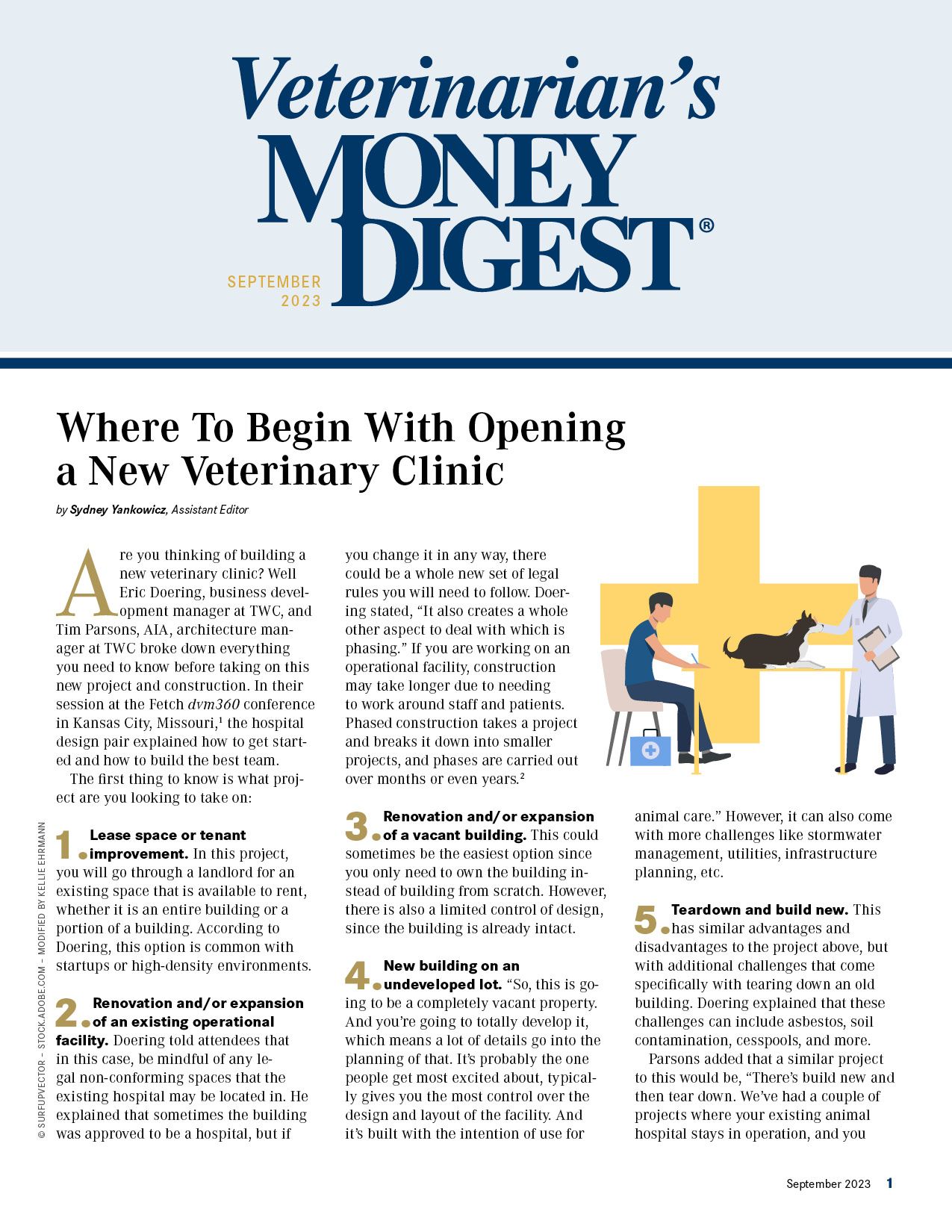Important considerations before building a veterinary hospital
This way, when you do get to the construction, there won’t be bumps in the road
When it comes to building a hospital, knowing what to look for from the beginning is key and will ultimately help you save money. “The worst time to find things are when you're in construction, that is the most expensive time to find them,” said Eric Doering, business development manager at TerWisscha Construction, at the Fetch dvm360® Conference in Kansas City, Missouri.1 He teamed up with William A. Frazier, senior vice president of veterinary & medical financing at Live Oak Bank, to deliver a lecture outlining costly mistakes to avoid when planning your hospital design project.
ABCDstock / stock.adobe.com

Site location and topographical surveying
Consider access to the veterinary clinic—and lack thereof. “If you have medians, intersections, that kind of stuff pay attention to that,” said Doering.
Additionally, the not-so-obvious aspects of the location are what is underground. “We just dealt with a project that had 7 cesspools and 4 septic tanks and various oil tanks,” Doering shared. Some ways to mitigate problems like these are by starting with a geotechnical report which can reveal information about the ground conditions. A technique geotechnical engineers often use is core drilling which can offer insight on the rock quality near the borehole, structural information, and indications of the amount of water present.2 Doering advised that core drilling should be performed in various locations such as the parking lot, the center of the building, the corners of the building, and more. “Because the structural integrity of the ground is going to tell us how we can design so that we don't have a lot of movement,” he explained.
Frazier warned though that sometimes geotechnical engineers miss things, and it’s also important to have an excavator examine the ground composition. “You have to spend money and investigate, that shouldn't be a big deal, but it's expensive,” said Doering. In the long run, investigating the land will help you save money.
Utilities
Utilities are another main area to factor in when planning to build a hospital. Doering shared that when you see certain areas of land that are not developed this is likely because a utility isn’t close enough. "And from a municipality standpoint, then the user has to pay to get it there," he said. He illustrated an example. “When you think you're just going to tie in the sewer line that's there and you're like, ‘Oh, we have sewer right out front… but the water is on the other side of the road, how are we getting that?’” This would then result in you having to shut down the road for traffic management to connect to the water, adding major costs to your project.
Regarding electricity, Doering added it’s important to find out if you have single-phase or three-phase power available. “Single-phase versus three-phase is going to determine whether or not you can build there,” he said. While single-phase power is used when electricity requirement is low, three-phase power is necessary in a veterinary practice because it can support the heavy equipment and machinery being used.3
“We're not trying to scare you,” reassured Frazier, “But the name of this is mistakes. These [scenarios] are the extremes, like 85% of the time you are fine. These are just things we want you to be aware of.”
References
- Doering E, Frazier WA. Avoid these costly mistakes. Presented at: Fetch dvm360 conference; Kansas City, Missouri. August 25-27, 2023.
- Farr A. Geotechnical investigation by directional core drilling. Trechless Technology Magazine. Septmeber 1, 2009. Accessed August 31, 2023. https://trenchlesstechnology.com/geotechnical-investigation-by-directional-core-drilling
- Single phase vs three phase: What’s the difference? Chint Global. Accessed August 31, 2023. https://chintglobal.com/blog/single-phase-vs-three-phase
